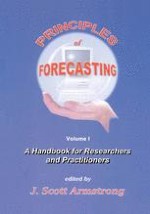2001 | OriginalPaper | Buchkapitel
Combining Forecasts
verfasst von : J. Scott Armstrong
Erschienen in: Principles of Forecasting
Verlag: Springer US
Enthalten in: Professional Book Archive
Aktivieren Sie unsere intelligente Suche, um passende Fachinhalte oder Patente zu finden.
Wählen Sie Textabschnitte aus um mit Künstlicher Intelligenz passenden Patente zu finden. powered by
Markieren Sie Textabschnitte, um KI-gestützt weitere passende Inhalte zu finden. powered by
To improve forecasting accuracy, combine forecasts derived from methods that differ substantially and draw from different sources of information. When feasible, use five or more methods. Use formal procedures to combine forecasts: An equal-weights rule offers a reasonable starting point, and a trimmed mean is desirable if you combine forecasts resulting from five or more methods. Use different weights if you have good domain knowledge or information on which method should be most accurate. Combining forecasts is especially useful when you are uncertain about the situation, uncertain about which method is most accurate, and when you want to avoid large errors. Compared with errors of the typical individual forecast, combining reduces errors. In 30 empirical comparisons, the reduction in ex ante errors for equally weighted combined forecasts averaged about 12.5% and ranged from 3 to 24%. Under ideal conditions, combined forecasts were sometimes more accurate than their most accurate components.
